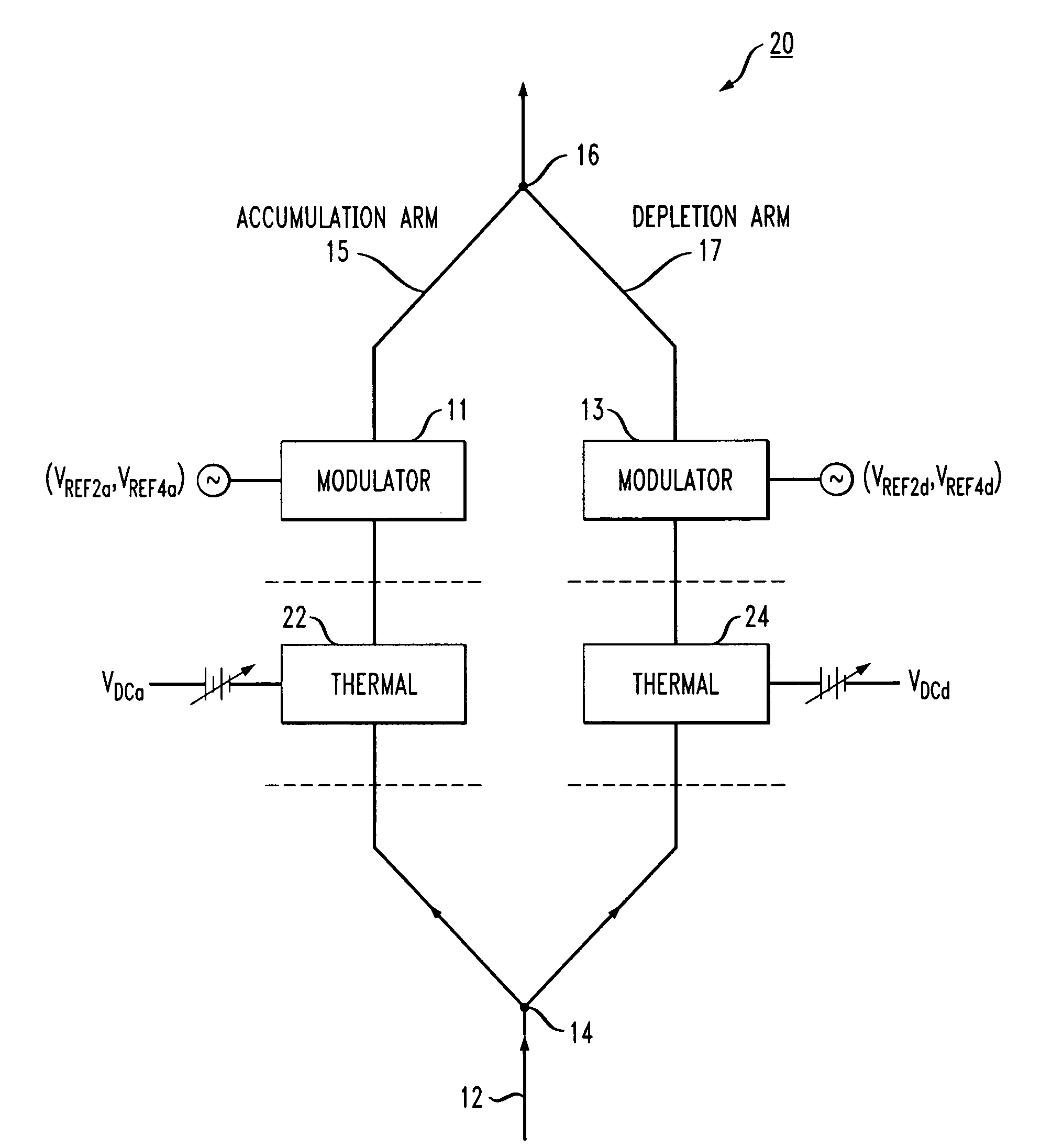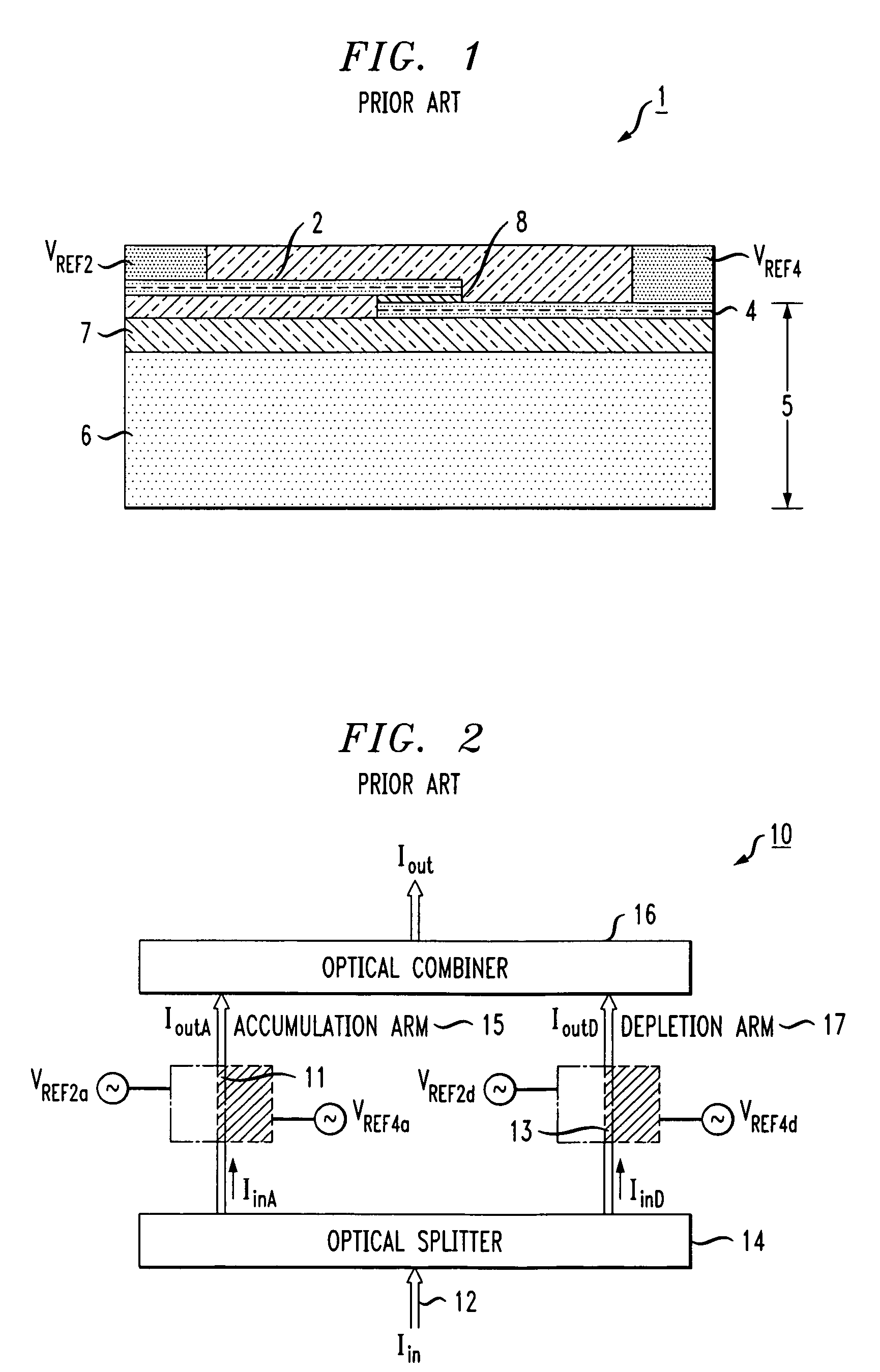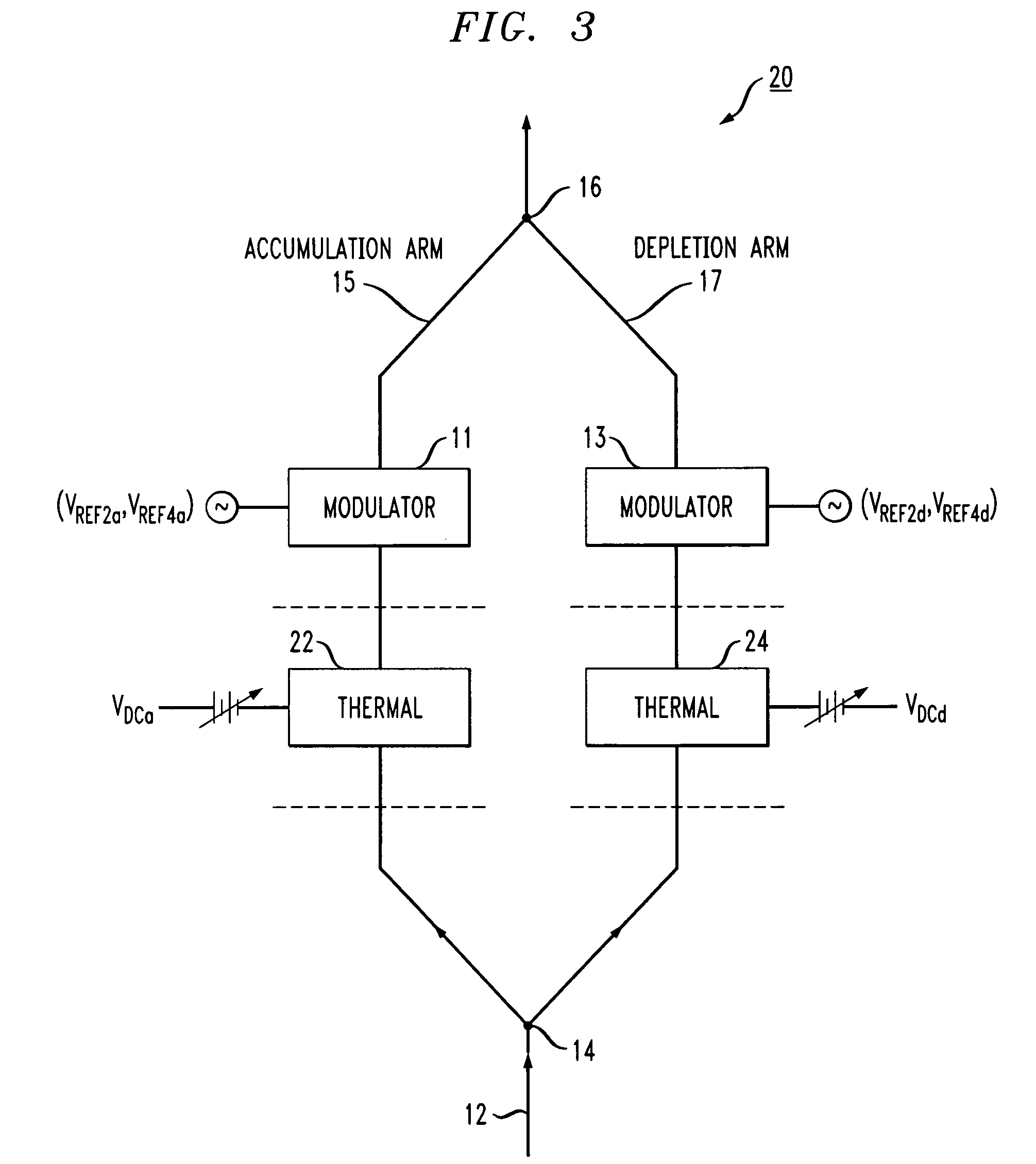Silicon modulator offset tuning arrangement
a technology of modulator and tuning component, applied in the direction of optical waveguide light guide, instruments, optics, etc., can solve the problem of not being able to use lithium niobate-based optical devices in such situations, and achieve the effect of simplifying the overall structure and greatly reducing the optical loss between the modulator and the tuning componen
- Summary
- Abstract
- Description
- Claims
- Application Information
AI Technical Summary
Benefits of technology
Problems solved by technology
Method used
Image
Examples
Embodiment Construction
[0026]Prior to describing the utilization of both free carrier modulation and thermal offset control for an SOI-based optical modulator, it is considered helpful to provide an understanding of the operation of a prior art modulator in greater detail. FIG. 2 is a simplified block diagram of an exemplary prior art Mach Zehnder interferometer 10 showing the individual arms of the design, denoted as accumulation arm 15 and depletion arm 17, where interferometer 10 is based upon the prior art structure discussed above in association with FIG. 1. Each arm of interferometer 10 contains a free-carrier-based phase modulator device, controlled by AC modulating signals applied SOI layer 4 and doped silicon layer 2 in the manner described above. The signals applied to each arm operate independent, shown in FIG. 2 as signals VREF2a and VREF4a used to control accumulation arm 15, and signals VREF2d and VREF4d used to control modulation within depletion arm 17. In one embodiment, SOI layer 4 may b...
PUM
| Property | Measurement | Unit |
|---|---|---|
| refractive index | aaaaa | aaaaa |
| temperature | aaaaa | aaaaa |
| area | aaaaa | aaaaa |
Abstract
Description
Claims
Application Information
 Login to View More
Login to View More - R&D
- Intellectual Property
- Life Sciences
- Materials
- Tech Scout
- Unparalleled Data Quality
- Higher Quality Content
- 60% Fewer Hallucinations
Browse by: Latest US Patents, China's latest patents, Technical Efficacy Thesaurus, Application Domain, Technology Topic, Popular Technical Reports.
© 2025 PatSnap. All rights reserved.Legal|Privacy policy|Modern Slavery Act Transparency Statement|Sitemap|About US| Contact US: help@patsnap.com



